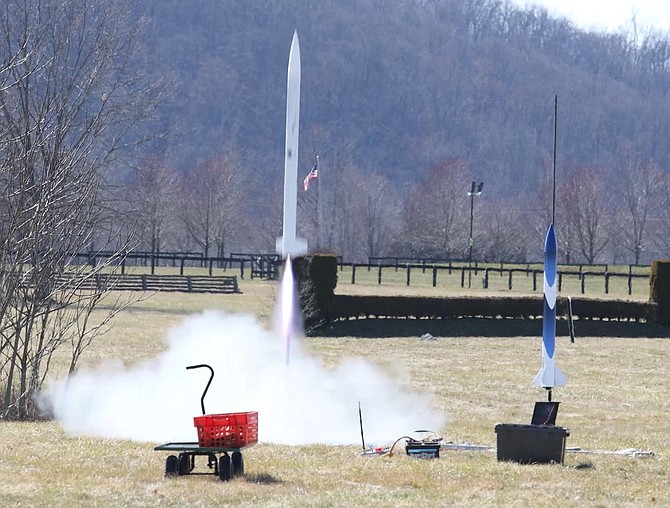A full-scale rocket is launched for the first time, with successful landing and results. Photo contributed
We are part of Oakton High School in Vienna and our club consists of a diverse group of 40 talented students who design, build, and fly rockets. Our club’s mission is to guide and teach young students to be STEM innovators through participating in programs that help build STEM-oriented skills and will foster them to become better communicators and leaders. We mainly compete in The Team America Rocketry Challenge (TARC), Battle of the Rockets, and the NASA Student Launch Initiative Competition. Over the past few years we have won 1st Place in the Battle of the Rockets Competition 2019, and became TARC national finalists in 2017 and 2018.
This exposure has given our members a chance to expand and apply the skills they have learned and honed for the competitions, and help them develop their problem-solving skills and teamwork capabilities. Additionally, we have done STEM engagement events with middle school and elementary school students to teach and inspire them to pursue STEM careers and jobs.
This year, one of our teams is participating in the NASA Student Launch Initiative (NASA SLI), and we will be flying to Huntsville, Ala. in April to launch our rocket and compete with other high schools and universities. For this competition, we had to develop our experiment and mission, and establish a set of guidelines that we had to meet by the time we are launching our rocket in April. Our mission is to design, construct, and fly a sounding rocket with an electronic payload using a commercial motor to a specified altitude, which will then be recovered safely. The data collected from the payload will be used to study the effects of different approximation techniques and rocket conditions on the accuracy of altitude calculations.
Berk Kasimcan is a student at Oakton High.



